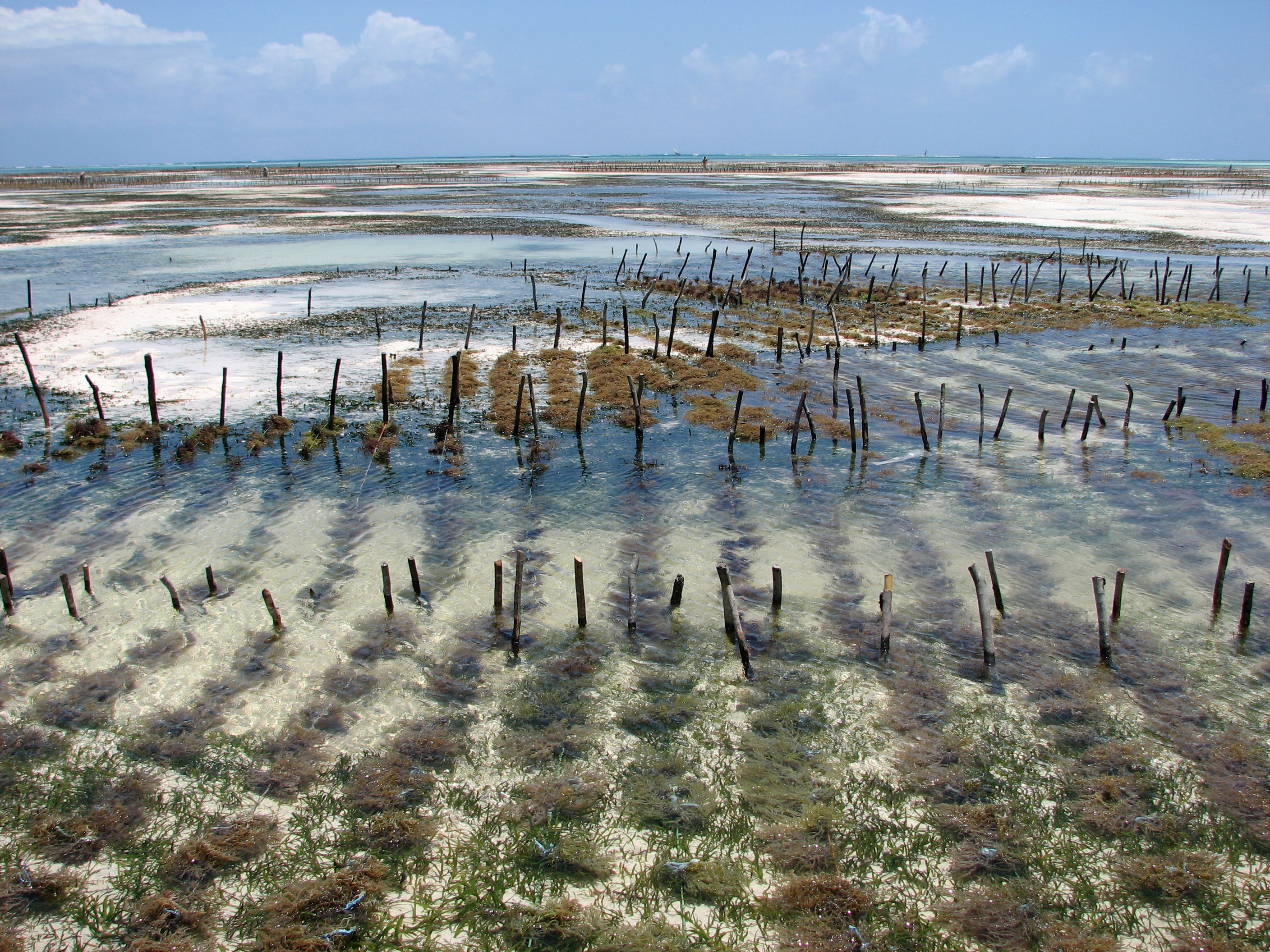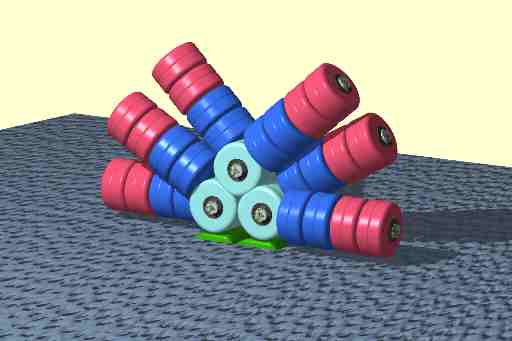|
Furcellaria
''Furcellaria'' is a genus of red algae. It is a monotypic genus, the only species being ''Furcellaria lumbricalis'', which has commercial importance as a raw material for carrageenan production. It is mainly harvested from the waters of Denmark and Canada. It grows on submerged rocks to a depth of about , but it can also grow in large floating mats, which are easier to harvest. ''F. lumbricalis'' is also an important habitat-forming seaweed, forming underwater "belts" often just below those of bladderwrack. These belts provide spawning habitat for many fish species, and for this reason some governments place regulations on the harvesting of this seaweed. Description ''Furcellaria lumbricalis'' is a common red macroalgal species.Rayment, W.J. 2008. Furcellaria lumbricalis A red seaweed. In Tyler-Walters H. and Hiscock K. (eds) Marine Life Information Network: Biology and Sensitivity Key Information Reviews, n-line Plymouth: Marine Biological Association of the United Kingdom. ... [...More Info...] [...Related Items...] OR: [Wikipedia] [Google] [Baidu] |
Gigartinales
Gigartinales is a red algae order in the class Florideophyceae Florideophyceae is a class of exclusively multicellular red algae. They were once thought to be the only algae to bear pit connections, but these have since been found in the filamentous stage of the Bangiaceae. They were also thought only to ex .... Systematics References Red algae orders {{red algae-stub ... [...More Info...] [...Related Items...] OR: [Wikipedia] [Google] [Baidu] |
Polyides Rotunda
''Polyides rotunda'' is a species of small red marine alga in the family Polyidaceae. Description ''Polyides rotunda'' grows to in length, its cartilaginous, terete and branches two or three times dichotomously. The branches are about in diameter reaching a uniform height. The holdfast is disc like. In colour it is purplish red.Dixon, P.S. and Irvine, L.M. 1977. ''Seaweeds of the British Isles Volume 1 Rhodophyta Part 1 Introduction, Nemaliales, Gigartinales'' British Museum (Natural History) They are exclusively multicellular, like all Polyidaceae. Habitat Generally epilithic in rock pools in the littoral and upper sublittoral. Sand tolerant. Distribution Generally distributed around Ireland, Great Britain, the Isle of Man and the Channel Islands. Reproduction ''Polyides rotunda'' is dioecious Dioecy ( ; ; adj. dioecious, ) is a characteristic of certain species that have distinct unisexual individuals, each producing either male or female gametes, either directly ... [...More Info...] [...Related Items...] OR: [Wikipedia] [Google] [Baidu] |
Red Algae
Red algae, or Rhodophyta (, ; ), make up one of the oldest groups of eukaryotic algae. The Rhodophyta comprises one of the largest Phylum, phyla of algae, containing over 7,000 recognized species within over 900 Genus, genera amidst ongoing taxonomic revisions. The majority of species (6,793) are Florideophyceae, and mostly consist of multicellular, ocean, marine algae, including many notable seaweeds. Red algae are abundant in marine habitats. Approximately 5% of red algae species occur in freshwater environments, with greater concentrations in warmer areas. Except for two coastal cave dwelling species in the asexual class Cyanidiophyceae, no terrestrial species exist, which may be due to an evolutionary bottleneck in which the last common ancestor lost about 25% of its core genes and much of its evolutionary plasticity. Red algae form a distinct group characterized by eukaryotic cells without flagella and centrioles, chloroplasts without external endoplasmic reticulum or unstack ... [...More Info...] [...Related Items...] OR: [Wikipedia] [Google] [Baidu] |
Galactose
Galactose (, ''wikt:galacto-, galacto-'' + ''wikt:-ose#Suffix 2, -ose'', ), sometimes abbreviated Gal, is a monosaccharide sugar that is about as sweetness, sweet as glucose, and about 65% as sweet as sucrose. It is an aldohexose and a C-4 epimer of glucose. A galactose molecule linked with a glucose molecule forms a lactose molecule. Galactan is a polymeric form of galactose found in hemicellulose, and forming the core of the galactans, a class of natural polymeric carbohydrates. D-Galactose is also known as brain sugar since it is a component of glycoproteins (oligosaccharide-protein compounds) found in Nerve tissue, nerve tissue. Etymology The word ''galactose'' was coined by Charles Weissman in the mid-19th century and is derived from Greek language, Greek , , and the generic chemical suffix for sugars ''-ose''. The etymology is comparable to that of the word ''lactose'' in that both contain roots meaning "milk sugar". Lactose is a disaccharide of galactose plus glucose. ... [...More Info...] [...Related Items...] OR: [Wikipedia] [Google] [Baidu] |
Seaweeds
Seaweed, or macroalgae, refers to thousands of species of macroscopic, multicellular, marine algae. The term includes some types of ''Rhodophyta'' (red), '' Phaeophyta'' (brown) and ''Chlorophyta'' (green) macroalgae. Seaweed species such as kelps provide essential nursery habitat for fisheries and other marine species and thus protect food sources; other species, such as planktonic algae, play a vital role in capturing carbon and producing at least 50% of Earth's oxygen. Natural seaweed ecosystems are sometimes under threat from human activity. For example, mechanical dredging of kelp destroys the resource and dependent fisheries. Other forces also threaten some seaweed ecosystems; for example, a wasting disease in predators of purple urchins has led to an urchin population surge which has destroyed large kelp forest regions off the coast of California. Humans have a long history of cultivating seaweeds for their uses. In recent years, seaweed farming has become a global ... [...More Info...] [...Related Items...] OR: [Wikipedia] [Google] [Baidu] |
Red Algae Genera
Red is the color at the long wavelength end of the visible spectrum of light, next to orange and opposite violet. It has a dominant wavelength of approximately 625–750 nanometres. It is a primary color in the RGB color model and a secondary color (made from magenta and yellow) in the CMYK color model, and is the complementary color of cyan. Reds range from the brilliant yellow-tinged scarlet and vermillion to bluish-red crimson, and vary in shade from the pale red pink to the dark red burgundy. Red pigment made from ochre was one of the first colors used in prehistoric art. The Ancient Egyptians and Mayans colored their faces red in ceremonies; Roman generals had their bodies colored red to celebrate victories. It was also an important color in China, where it was used to color early pottery and later the gates and walls of palaces. In the Renaissance, the brilliant red costumes for the nobility and wealthy were dyed with kermes and cochineal. The 19th century brought ... [...More Info...] [...Related Items...] OR: [Wikipedia] [Google] [Baidu] |
Wort
Wort () is the liquid extracted from the mashing process during the brewing of beer or whisky. Wort contains the sugars, the most important being maltose and maltotriose, that will be Ethanol fermentation, fermented by the brewing yeast to produce ethanol, alcohol. Wort also contains crucial amino acids to provide nitrogen to the yeast as well as more complex proteins contributing to beer head (froth) retention and flavour. Production The first step in wort production is to obtain malt, which is made from dried, sprouting, sprouted cereal grains, including barley. The malt is run through a mill, cracking the husk and exposing the starch inside. The milled grain is then mashing, mashed by mixing it with hot water, and then steeping, steeped, a process that enables enzymes to convert the starch in the malt into sugars which dissolve in the water. Sometimes the mash is heated at set intervals to alter the enzyme activity. The temperature of the mixture is usually increased to 78 ... [...More Info...] [...Related Items...] OR: [Wikipedia] [Google] [Baidu] |
Eucheuma
''Eucheuma'', commonly known as sea moss or gusô (), is a rhodophyte seaweed that may vary in color (purple, brown, and green). ''Eucheuma'' species are used in the production of carrageenan, an ingredient for cosmetics, food processing, and industrial manufacturing, as well as a food source for people in the Philippines, Caribbean and parts of Indonesia and Malaysia. ''Eucheuma cottonii'' – which grows in the Caribbean and cultivated in the Philippines – is the particular species known as gusô. Other species include ''Betaphycus gelatinae'', ''Eucheuma denticulatum'', and several species of the genus ''Kappaphycus'', including ''K. alvarezii''. Since the mid-1970s, ''Kappaphycus'' and ''Eucheuma'' have been a major source for the expansion of the carrageenan industry. Commercial seaweed farming of gusô (as well as '' Kappaphycus'') was pioneered in the Philippines. Though commercially significant, species of ''Eucheuma'' are difficult to identify without the aid of close ... [...More Info...] [...Related Items...] OR: [Wikipedia] [Google] [Baidu] |
E Number
E numbers, short for Europe numbers, are codes for substances used as food additives, including those found naturally in many foods, such as vitamin C, for use within the European Union (EU) and European Free Trade Association (EFTA). Commonly found on food labels, their safety assessment and approval are the responsibility of the European Food Safety Authority (EFSA). The fact that an additive has an E number implies that its use was at one time permitted in products for sale in the European Single Market; some of these additives are no longer allowed today. Having a single unified list for food additives was first agreed upon in 1962 with food colouring. In 1964, the directives for preservatives were added, in 1970 antioxidants were added, in 1974 emulsifiers, stabilisers, thickeners and gelling agents were added as well. Numbering schemes The numbering scheme follows that of the International Numbering System for Food Additives, International Numbering System (INS) as deter ... [...More Info...] [...Related Items...] OR: [Wikipedia] [Google] [Baidu] |
Phycoerythrin
Phycoerythrin (PE) is a red protein-pigment complex from the light-harvesting phycobiliprotein family, present in cyanobacteria, red algae and Cryptomonad, cryptophytes, accessory to the main chlorophyll pigments responsible for photosynthesis.The red pigment is due to the prosthetic group, phycoerythrobilin, which gives phycoerythrin its red color. Like all phycobiliproteins, it is composed of a protein part covalently binding chromophores called phycobilins. In the phycoerythrin family, the most known phycobilins are: phycoerythrobilin, the typical phycoerythrin acceptor chromophore. Phycoerythrobilin is a linear tetrapyrrole molecule found in cyanobacteria, red algae, and cryptomonads. Together with other bilins such as phycocyanobilin it serves as a light-harvesting pigment in the photosynthetic light-harvesting structures of cyanobacteria called phycobilisomes. Phycoerythrins are composed of (αβ) monomers, usually organised in a disk-shaped Protein quaternary structure, trim ... [...More Info...] [...Related Items...] OR: [Wikipedia] [Google] [Baidu] |
Phycobiliprotein
Phycobiliproteins are water-soluble proteins present in cyanobacteria and certain algae (rhodophytes, cryptomonads, glaucocystophytes). They capture light energy, which is then passed on to chlorophylls during photosynthesis. Phycobiliproteins are formed of a complex between proteins and covalently bound phycobilins that act as chromophores (the light-capturing part). They are most important constituents of the phycobilisomes. Major phycobiliproteins Characteristics Phycobiliproteins demonstrate superior fluorescent properties compared to small organic fluorophores, especially when high sensitivity or multicolor detection required : * Broad and high absorption of light suits many light sources * Very intense emission of light: 10-20 times brighter than small organic fluorophores * Relative large Stokes shift gives low background, and allows multicolor detections. * Excitation and emission spectra do not overlap compared to conventional organic dyes. * Can be used in tandem (si ... [...More Info...] [...Related Items...] OR: [Wikipedia] [Google] [Baidu] |
Galactan
Galactan (galactosan) is a polysaccharide consisting of polymerized galactose. In general, galactans in natural sources contain a core of galactose units connected by α(1→3) or α(1→6), with structures containing other monosaccharides as side-chains. Galactan derived from '' Anogeissus latifolia'' is primarily α(1→6), but galactan from acacia trees is primarily α(1→3). '' Halymenia durvillei'' is a red seaweed (algae) that produces a sulfated galactan. Several other algae species also contain galactans. Including '' Carpopeltis . Galactan is found in the side chains of rhamnogalacturonan I (RG-I) and is needed for gel formation in the cell walls of organisms. It was observed there was less of the gelling characteristic (as well as the polymeric chains being more likely to degrade) when fewer galactans were present in the polymeric side chains. See also * Agar Agar ( or ), or agar-agar, is a jelly-like substance consisting of polysaccharides obtained from the ... [...More Info...] [...Related Items...] OR: [Wikipedia] [Google] [Baidu] |





